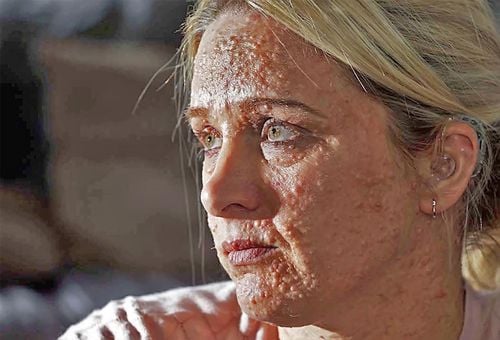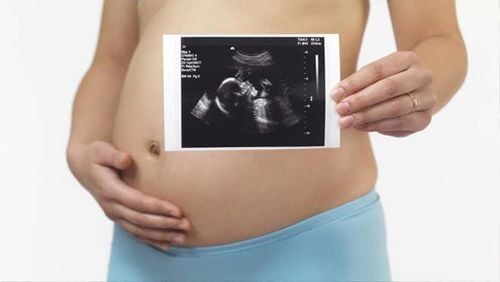This is an automatically translated article.
Neurofibromatosis milia is a form of cutaneous neurofibromatosis, commonly seen in neurofibromatosis, also known as neurofibromatosis, with lesions that are nodules, lumps, and tumors on the skin. Most neurofibromas are benign, but they are unsightly and affect the patient's daily activities.
1. What is milia neurofibromatosis?
Nerve fibromatosis, also known as cutaneous neurofibromatosis, is actually a neurofibromatosis, also known as neurofibromatosis (NF). It is an autosomal dominant disorder caused by a chromosomal disorder that causes tumors on neurofibromatosis or nerve fibers.Tumors can appear on nerve fibers in any part of the body and cause effects in that part as well as nearby organs. Depending on the location of the tumor, the degree of impact can range from mild to severe.
Most neurofibromas are benign with many different types (7 types are identified), but the two most common types are neurofibromatosis type 1 (NF1, also known as peripheral neurofibromatosis). borderline or Von Recklinghausen disease) and neurofibromatosis type 2 (NF2, also called bilateral neurofibromatosis), in which NF1 is more common than NF2.
Called milia neurofibromatosis because the disease causes nodular tumors on the skin, which look like milia with varying sizes and numbers. Migraine neurofibromatosis is a common skin lesion in type 1 neurofibromatosis and some, but not all, types. Only NF1 is mentioned here because it is the most common type of neurofibromatosis, accounting for 85% of detected cases.
2. Symptoms of milia neurofibromatosis
Neurofibromatosis milia is a common lesion of NF1 with specific symptoms as follows:
Appears many nodules with stalks or polyps (the number can be from several hundred to several thousand nodules) on the skin. The nodules are brown or coincident with the skin color, varied and variable in size. The nodules are soft and elastic (like rubber). In the case of cutaneous neurofibromatosis, the tumor is larger and heavier, hanging mass and affecting the body shape. In addition to damage to the skin, neurofibromas can also affect bones, the nervous system and other soft tissues such as:
Eyes: Small tumors, also known as Lisch's nodules, are yellow-brown in the skin. iris, 1 - 2 mm in size. Bones: The skull bone deformity causes a large head, the spine bone causes scoliosis, bone spurs, the limb bones cause hypertrophy and deformity of the legs. Complications of neurofibromatosis:
Appearance is affected, loss of aesthetics, making patients self-conscious, inferior, afraid to integrate into the community and society. Injury to fibroids in the nervous system affects physical and mental development. In case the tumor is many and large, it is possible to surgically remove the damaged part, leading to disability.

U xơ thần kinh mụn thịt chủ yếu được điều trị bằng phương pháp phẫu thuật
3. Diagnosis of milia neurofibromatosis
Diagnosis of milia neurofibromatosis is mainly based on clinical examination. Because this is a common type 1 cutaneous lesion of neurofibromatosis, the diagnosis of neurofibromatosis should be based on at least 2 of the following approved criteria:
More than 6 brown spots or macules, milk coffee and the diameter is greater than 5mm (before puberty) or more than 15mm (after puberty). More than 2 neurofibromas or 1 plexiform neurofibroma. Freckles, macules with darker skin pigmentation in the armpits, groin, skin folds. There are more than 2 Lisch nodules on the iris. Characteristic bone lesions (pseudogout, periosteal thinning, sphenoid dysplasia, ...) Family history of a relative with neurofibromatosis.
4. Treatment of neurofibromatosis
Neurofibromatosis has no specific treatment. Nerve fibroma is mainly treated by surgical methods in the following cases:
Tumor on the skin affecting appearance, causing cosmetic loss. Tumors on the skin are large in size, hindering the patient's activities and life. Surgical removal of cutaneous milia is difficult because the tumor is large, or deep under the skin, close to blood vessels and nerve fibers.
In addition, cases of bone damage that cause scoliosis need surgery to correct bone deformities. Large tumors that compress the brain and spinal cord and affect function should be treated with chemotherapy or radiation because they cannot be performed by surgery. Nerve fibroma is a cutaneous neurofibromatosis with the manifestation of a series of tumors of various sizes on the skin, causing loss of aesthetics, appearance and affecting the patient's activities and quality of life. Therefore, patients should have regular health check-ups to receive advice on treatment and quality of life.
Vinmec International General Hospital is the address for examination, treatment and prevention of diseases. When performing the examination process at Vinmec, customers will be welcomed and used modern facilities and equipment along with perfect medical services under the guidance and advice of experts. Good doctors, well-trained both at home and abroad.
Please dial HOTLINE for more information or register for an appointment HERE. Download MyVinmec app to make appointments faster and to manage your bookings easily.













